Time Travel Research Center © 2005 Cetin BAL - GSM:+90 05366063183 - Turkey/Denizli
Nazi UFO Electromagnetic Propulsion & Antigravity Technology
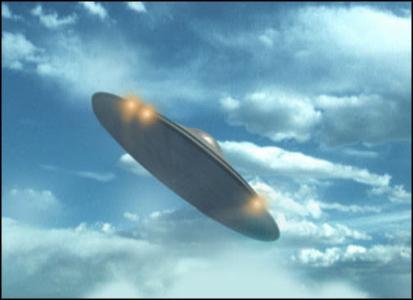
NAZI UFOs TRUTH or MYTH?
The HAUNEBU DISC
The most
common craft associated with the Third Reich Discs. The resemblence to
the Adamski Discs is undeniable. To see a movie on Nazi Saucers go here.
Early Development
The SS E-IV (Entwicklungsstelle 4), a development unit of the SS occult
“Order of the Black Sun” was tasked with
researching alternative energies to make the Third Reich independent of
scarce fuel oil for war production. Their
work included developing alternative energies and fuels. {To see
Adamski's
saucer photos and films }
This group developed by 1939 a revolutionary
electro-magnetic-gravitic
engine which improved Hans Coler’s free
energy machine into an energy Konverter coupled to a Van De Graaf band
generator and Marconi vortex dynamo
(a spherical tank of mercury) to
create powerful rotating electromagnetic
fields
that affected gravity and reduced
mass. It was designated the Thule Triebwerk (Thrustwork, a.ka. Tachyonator-7
drive) and was to be installed into
a Thule designed disc.
Since 1935 the Thule Gesellschaft (Society) had been scouting for a remote,
inconspicuous, underdeveloped
testing ground for such a craft. Thule found a location in Northwest Germany
that was known as (or possibly
designated as) Hauneburg. At the establishment of this testing ground and
facilities the SS E-IV unit simply
referred to the new Thule disc as a war product- the “H-Gerat” (Hauneburg
Device).
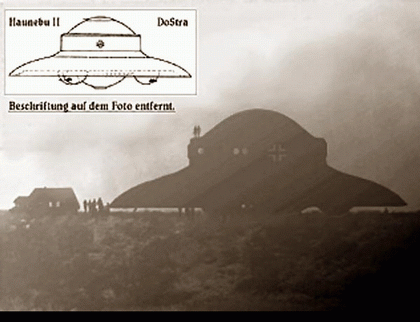
For
wartime security reasons the name was shortened to Haunebu in
1939 and was briefly designated RFZ-5 along with Vril‘s machines once
the Hauneburg site was abandoned in favor of the more suitable Vril
Arado Brandenburg aircraft testing grounds.
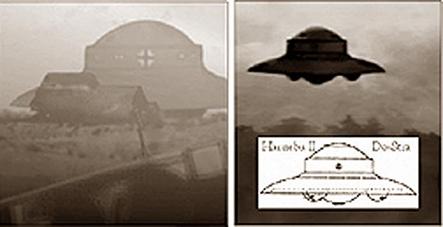 |
The
early Haunebu I craft of which two prototypes were constructed were 25 meters in diameter, had a crew of eight and could achieve the incredible initial velocity of 4,800 km/h, but at low altitude. Further enhancement enabled the machine to reach 17,000 km/h. Flight endurance was 18 hours. To resist the incredible temperatures of these velocities a special armor called Victalen { Frozen Smoke } was pioneered by SS metallurgists specifically for both the Haunebu and Vril series of disc craft. The Haunebu I had a double hull of Victalen. {Frozen Smoke developed in the 30's} |
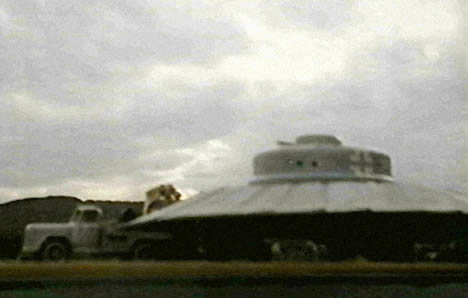
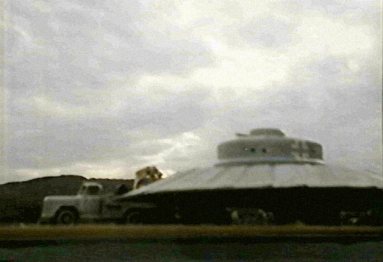
|
The
Experimental KSK Gun The early models also attempted to test out a rather large experimental gun installation- the twin 60 mm KSK (KraftStrahlKanone, Strong Ray Cannon) which operated off the Triebwerk for power. It has been suggested that the ray from this weapon made it a laser, but it was not. The Germans called it an "anachronism" gun- not belonging to that time period or out of place. When a Vril 7 was downed by the Russians in 1945 a similar underbelly mounted KSK gun was destroyed with debris recovered from the battle site. Postwar the strange metal balls and tungsten spirals that made up the weapon could not be identified. But recently it has been speculated that the Triebwerk-connected balls formed cascade oscillators that were connected to a long barrel-shrouded transmission rod wrapped in a precision tungsten spiral, or coil to transmit a powerful energy burst suitable to pierce up to 4 in (100 mm) of enemy armor. The heavy gun installation, however, badly destabilized the disc and in subsequent Haunebu models lighter MG and MK cannon were supposedly installed. |
|
The Series Prototypes The Haunebu I first flew in 1939 and both prototypes made 52 test flights. In 1942, the enlarged Haunebu II of 26 meters diameter was ready for flight testing. This disc had a crew of nine and could also achieve supersonic flight of 6,000 to 21,000 km/h with a flight endurance of 55 hours. Both it and the further developed 32 meter diameter Haunebu II Do-Stra had heat shielding of two hulls of Victalen. The craft were constructed and tested between 1943-44. The craft made 106 test flights. By 1944, the perfected war model, the Haunebu II Do-Stra (Dornier STRAtospharen Flugzeug/Stratospheric Aircraft) was tested. Two prototypes were built. These massive machines, several stories tall, were crewed by 20 men. They were also capable of hypersonic speed beyond 21,000 km/h. The SS had intended to produce the machines with tenders for both Junkers and Dornier but in late 1944/early 1945 Dornier was chosen. The close of the war, however, prevented Dornier from building any production models. Yet larger still was the 71 meter diameter Haunebu III. A lone prototype was constructed before the close of the war. It was crewed by 32 and could achieve speeds of 7,000 to 40,000 km/h. It had a triple Victalen hull. It is said to have had a flight endurance of 7 to 8 weeks. The craft made 19 test flights. This craft was to be used for evacuation work for Thule and Vril in March 1945. |
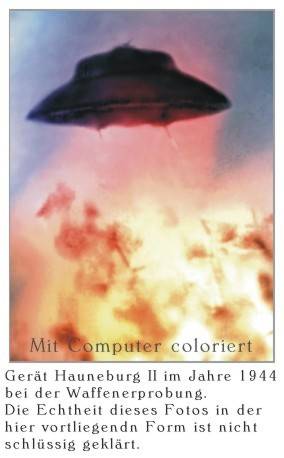 |
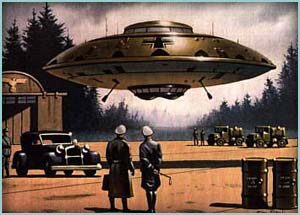
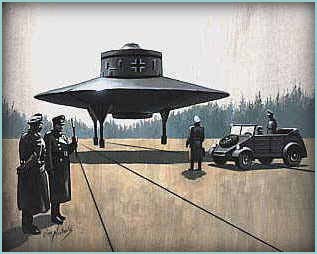
Further plans for a 120 meter diameter Haunebu IV were in the works but no such craft is known to have been constructed before the end of the war.
FLUGELRAD SERIES
by Rob Arndtc
1943
BMW Flugelrad I V-1 was painted matte aluminium and performed its first
flying test at the Czech Aerodrome at
Prag-Kbely between August and September. It left the hanger by its own means,
the rotor began to spin and the
machine lifted to 1 meter and flew for 300 meters before making a hard
landing. During static tests the prototype
was surrounded by concrete blocks to protect the crew in the event of a disc
blade breaking. In appearance the
basic Flugelrad lay-out was of a central body housing a pilot covered by a
hemispheric dome surrounded by a disc
blade rotor of 6 meters with a lower body housing a BMW 003 jet engine, fuel,
a Strahlrohr jet deflector and fixed
landing gear of 4 legs fitted with wheels (with no brakes nor shock
absorbers). Flight was achieved by jet exhaust
deflection into the 16 variable-pitch disc blades with hydropneumatic
actuators.
1944
Several changes were introduced on the second prototype designated BMW
Flugelrad I V-2. The cockpit was
enlarged to carry two crew and serve as support for the addition of an
aerodynamic rudder. The fixed landing gear
was replaced with a more practical semi-retractable one. Rotor diameter was
enlarged to 8 meters but kept the 16
disc blades. The machine was painted yellow and performed its first flight
tests in the autumn of 1944 at the
Neubiberg Aerodrome near BMW's Munich facility. Stability problems continued
to plague the machine.
1945
The next prototype, BMW Flugelrad II V-1, kept the same body but discarded
the failed rudder, which proved
almost useless. The rotor was enlarged to 12.6 meters. The first flight was
at Prag-Kbely in February 1945 with
another jump at low altitude. Three other Flugelrad models were under study
in early 1945:
the BMW Flugelrad II V-2 under construction
the BMW Flugelrad II V-3 models
the BMW Flugelrad III design phase
Both the BMW Flugelrads II V-2 and V-3 would have used two BMW 003 engines
in the lower body side-by-side,
enlarged cockpits for four crew, and rotor enlargement to 14.4 meters (although
the V-2 would have had 24 disc
blades while the V-3 would have had 21). The final BMW Flugelrad III would
have been the production aircraft- a
huge stratospheric recon aircraft powered by two BMW 018 engines each with
twin Strahlrohrs mounted one above
the other, an upper and lower cockpit arrangement, 6 crew, enlarged 24 meter
rotor with 32 disc blades, fully
retractable gear, and room for an array of recon cameras. Nevertheless, all
work ceased on the Flugelrads in April
1945. All prototypes and documentation were destroyed in the Russian advance.
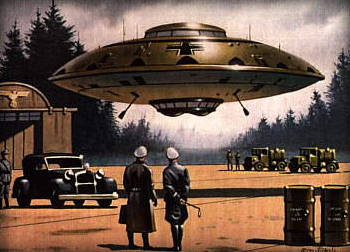
Probably the most misunderstood and
problematic of all terrestrial-based disc
technology lies at the heart of the German disc programs that started with
the birth
of the NSDAP (Nazi Party) in 1920- a full 13 years before Adolf Hitler came
to power
as the leader of the Third Reich.
To fully comprehend the depth of these programs requires the knowledge that
above all else the NSDAP was founded from the onset by the occult Thule
(1917)
and Vril (1919) Gesellschafts (Societies), and other occult groups like the
DHvSS
(Men of the Black Stone) that stretched back to the turn of the 20th century
with the
old German Order (a.k.a. Order of Teutons).
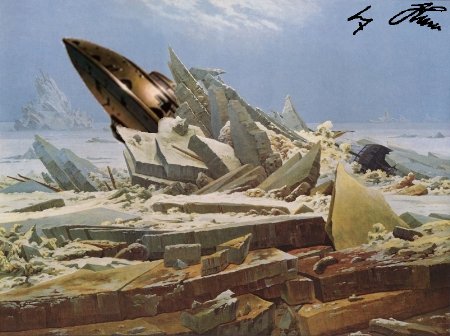
As such the very first disc project in Germany built in 1922 was not even an
aircraft
but an
inter-dimensional flight machine
in disc form- the JFM built by Thule-Vril.
When Adolf Hitler (a Thule member along with Goering, Himmler, and various
other
top Nazi officials) became chancellor in Germany in 1933 the 11 year occult
metaphysical science of Thule-Vril became strengthened by official state
backing
for the continued disc development programs starting with an RFZ
(RundFlugZeug), or "Round Aircraft" series of discs that utilized levitators
developed by W.O. Schumann of the Technical University of Munich who worked
on
the JFM.
1934 saw the first RFZ discs built which led in five short years to two vast
programs
of highly advanced disc aircraft overseen by Himmler’s SS- specifically, the
SS
technical branch Unit E-IV (Entwicklungsstelle 4) which was created to
explore
various alternative energies.
This unit was tasked with developing both the
Haunebu and Vril disc designs that utilized the world’s first electro-magnetic-gravitic
drive systems: the Vril and Thule Triebwerks.
These drives relied on Hans
Coler’s
free energy Konverter coupled to a Van De Graaf band generator and Marconi
vortex dynamo (a huge spherical tank of mercury) to create powerful rotating
electromagnetic fields that affected gravity.
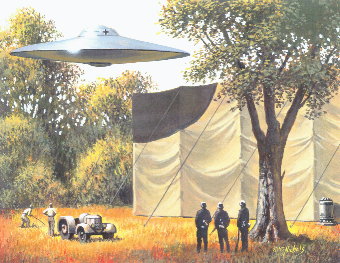
Many have often inquired why then when war started in 1939 did Germany not
use
these advanced and unique machines in air combat? The simple truth lies in
the
fact that these machines, despite their superior overall performance to
conventional
piston-engined aircraft and early jets, could not be realistically adapted
to any
useful military role other than the most basic transport and recon work. The
strong
EM engines were difficult to control and could not hope to imitate the
flight
characteristics of high performance fighters like the Me BF 109 or Fw 190.
There
was very little room for either offensive or defensive armament in these
designs
except for a few experimental light MG and MK cannons that proved
impractical in
flight and a rather large experimental Donar (Thunder) Kraftstrahlkanone (Strong
Jet Cannon). These guns tended to destabilize the disc badly and were
eventually
removed. The disc bodies themselves were not capable of carrying any
ordnance
at all internally or externally (no bombs, unguided rockets, or missiles)
and could
only make turns of 22.5, 45, and 90 degrees.
Nevertheless, the SS pursued an aggressive policy of theft, forced
cooperation,
and strong internal development of these types of machines due to the
increasing
Allied bombing offensive that made conventional aircraft take-offs and
landings
highly dangerous. VTOL was seen as the logical solution to this problem. If
the SS
could develop a production machine that in the future could be armed (with
cannon,
missiles, or even an electrostatic weapon) then Germany might be able to
turn the
air war.
To shorten the time of finding VTOL solutions, the SS robbed both Germany’s
patent office and every patent office in occupied Europe. Those with
aeronautical
skill enough to contribute to the SS effort were either arrested or coerced
into
participating in the programs- among them Viktor Schauberger of Austria and
Henri
Coanda of Rumania. The SS also used its large slave labor force to assist in
construction of large underground facilities for these discs and often for
production
of components to these machines.
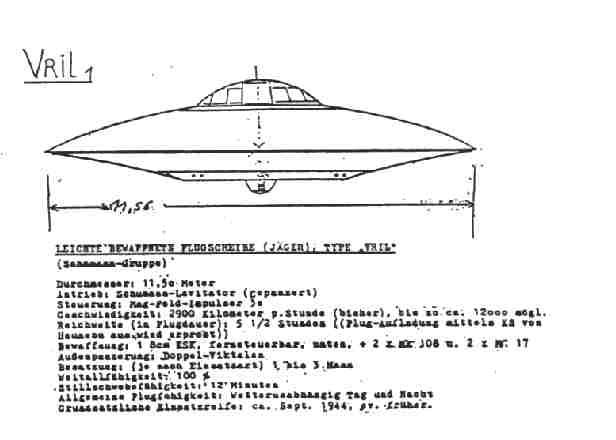
Although the SS requested additional slave laborers from Armaments Minister
Albert Speer, Speer himself was not told what war projects the laborers
would be
used for; indeed, Speer was deliberately kept out of the entire SS disc
development
programs for security reasons and the fact that the SS was a state-within-a-state
with its own production facilities, war material, scientists and technicians,
slave
workforce, and the knowledge of secret Third Reich military bases outside
Germany
where these discs were both tested and stored.
Among those held, Viktor Schauberger became the leader of most interest due
to
his highly unconventional use of liquid vortex technology which was
perfected while
he was in custody at Mauthausen. Originally designed for an odd bio-submarine,
the strange Repulsin discoid motors were to be adapted to aircraft. Heinkel
was the
first to receive the results of these early discoid tests but refused to act
on it. A year
after the Repulsin Model A motor was being studied one of Heinkel’s own
engineers
named Rudolf Schriever proposed his own "Flugkreisel" (Flying Gyro) that
utilized
conventional jet engines instead of the Repulsin discoid motor. His design
was
taken from him and handed over to a team of scientists for further study and
the
construction of a large flying prototype. The team consisted of Dr. Richard
Miethe,
Klaus Habermohl, and an Italian- Dr. Guiseppe Belluzzo, who had come up with
his
own design for a jet powered round flying bomb- the Turboproietti.
Meanwhile, BMW started work on a design very similar to Schriever’s
Flugkreisel
but utilizing the company’s own BMW 003 jet engines. These machines, called
‘Flugelrads" (Winged Wheels) were not really true disc aircraft but jet
autogyros
that used a standard BMW 003 with a Strahlrohr (Jet pipe) deflector to power
a
multi-blade disc rotor. These craft were built on a much smaller scale than
Schriever’s Flugkreisel so work proceeded from 1941-45 with construction of
prototypes beginning in 1943. Instability, however, was never really solved
in the
earlier designs. One disc, however, a BMW Fluglerad II V-2 possibly achieved
flight
in April 1945.
Schriever’s own disc began to take shape in 1943 as well and flew under jet
power
provided by three attached special kerosene-burning jet engines driving the
disc
rotor as well as two kerosene jets on the body for forward thrust and
horizontal
stability.
Flight characteristics were good but then the SS decided to abruptly drop
Schriever’
s jet-fan design in favor of Miethe’s version that eliminated the large disc
rotor
blades driven by jet engines for Schauberger’s liquid vortex engine, but on
a larger
scale. With Schauberger released back to Austria in 1944 by the SS, the
Miethe
disc took to the air that same year over the Baltic.
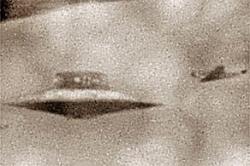
At the same time a private venture with official backing from Air Ministry
General
Udet was taking shape in Leipzig. Arthur Sack who caught the attention of
Udet way
back in 1939 with his A.S.1 circular wing flying aero model was given
permission
and some funding to build a manned large-scale version of his model. Sack
took up
the challenge and built 4 more models of increasing size. When the A.S.5
demonstrated that the basic concept was sound construction began on the
manned
version in early 1944- the A.S.6. Within a month the strange largely wooden
aircraft
utilizing salvaged parts from a ME BF 108 was taxiing and making attempts to
fly.
But this project was doomed from the start with an underpowered engine and
plagued by structural problems which meant the aircraft could hop- but never
fly.
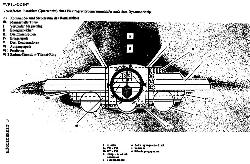
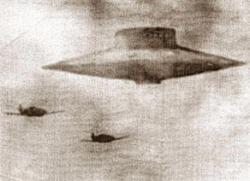
Due to round-the-clock bombing the SS was forced to try even more drastic
measures, launching unmanned interceptor discs from the Schwarzwald. These
discs were known as the "Feuerball" weapon, sometimes erroneously referred
to as
the mystery "V-7" weapon (of which there never was an official designation).
The
WNF Feuerball relied on a rocket motor for launch, a plume sensor for aerial
detection, and an electrostatic filed weapon invented at Messerschmitt’s
Oberammergau facility. Production of these craft was initially performed by
WNF.
Because the discs burned chemicals around its ring to create the
electrostatic field
necessary to disable Allied bomber engines and radar the object was soon
nicknamed the "Foo Fighter" by the Allies who sighted this fiery halo weapon
approaching them by day or night. FOO was a take on the French word Feu
(Fire)
and from the Smokey Stover comic of a bumbling fireman that actually started
fires!
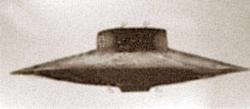
Naturally, WNF observed the burning effect too and soon nicknamed their
weapon
the WNF Feuerball (Fireball). The Feuerballs plagued the 415th NFS from
November 1944 to April 1945. By that time production had been shifted to the
Zeppelin Werk that nicknamed the larger improved weapon as "Kugelblitz" (Ball
Lightning). The Allies seemed confused by these weapons which ranged in size
from small to large and attacked in singles or multiples. The Germans
further
confused the Allies by launching "Seifenblasen" along with the Feuerballs.
Seifenblasen (Soap Bubbles) were large weather balloons trailing metal
strips that
confused Allied radar. Their large round shape reflecting in daylight gave
them the
appearance of a shining globe similar to the Feuerball. The Germans further
complicated the identification of the "Foo Fighters" with a range of smaller
purely
spherical aerial probes that were used as psychological weapons. These
"KugelWaffen" (Ball weapons) played aerial games with the Allied bomber
gunners
that would have in time distracted them from the real threat of larger
approaching
Kugelblitz discs.
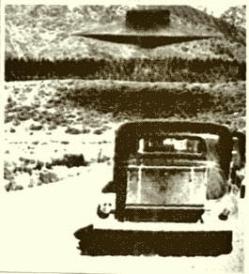
But by the spring of 1945 the war was lost regardless and most of the
remaining
disc programs were halted. Henri Coanda had been arrested in Paris in 1940
and
forced to work on a disc under SS supervision. His design for a lenticular
disc that
benefited from his own "Coanda effect" was a masterpiece of jet disc design.
But
because it required 12 JUMO 004 jets to power the huge machine the project
never
got past the wind tunnel testing phase. Likewise, Andreas Epps independent
Omega Diskus which utilized two Pabst ramjets and 8 Argus lift fans was also
confined to 1/10th scale model testing.
Dr. Alexander Lippisch had also studied disc aerodynes back in 1941 but was
too
involved in the ME-163 Komet and DM-1 delta glider programs to produce
anything
more than brief design concepts based on the Gottingen K 1253 disc wing
profile.
The Horten brothers, experts with flying wings, also studied circular wing
designs
but did not actually work on any in Nazi Germany. They did so for the US
Govt.
postwar in late 1945-46 producing what is now believed to be the craft that
crashed
at Roswell in 1947- a spy craft parabolic lifting body carried by a large
meteorological balloon.
In the face of imminent defeat BMW destroyed all their Flugelrads.
Schriever’s
Flugkreisel was also destroyed. Miethe’s disc may have been captured as
Miethe
went to Canada postwar to work on AVRO’s designs.

Habermohl was captured by the Russians while Dr. Belluzzo returned to Italy.
Schauberger’s Repulsins were also captured by the Allies while most of the
SS
scientific branch records still intact were captured by the British who
postwar
attempted to create a working design through AVRO Canada with eventual US
assistance.
One very little known Peenemunde disc project under Heinrich Fleissner was
the
last disc to take off from Berlin in late April 1945 on an official mission.
But details of
the "Dusenscheibe" (Devils Disc) remain clouded in mystery.
Meanwhile, the Feuerball attacks that stopped in April 1945 in Germany
resumed in
August 1945 in Japan- an obvious technology transfer from Germany to Japan
via
U-Boat. The Japanese, however, lacked all the documentation for this weapon
and
only launched a few. It is said that the Japanese were frightened by this "demonic
thing" and destroyed the remaining Feuerballs by dynamiting them in a pit.
Photographic evidence also seems to identify "Kugelwaffen" sent to Japan as
well
as several are seen trailing Sally bombers, probably for flight testing.
But the Third Reich story ends as strangely as it had begun. What about the
mysterious Thule-Vril discs which were actually built in small numbers? By
1945
there were quite a few Haunebu II and Vril 7 discs flying. Vril had even
tested the
Vril 8 Odin and possibly the even more streamlined Vril-9 Abjager. These
craft were
not destroyed but evacuated from March 1945 to an area safe from Allied
bombing
or capture.
In the year preceding the start of WW2 Germany sent an expedition to
Antarctica to
scout out a location for a military base there. The Germans found such a
location in
the former Queen Maud Land which Germany renamed Neu Schwabenland. There,
in secret during 1942-43, a base was built in the Muhlig-Hoffman mountains.
Base
211 (or Station 211). The base was supplied with slave laborers shipped by
sea
and U-boats to construct an elaborate cave complex deep within the mountains-
an
impregnable fortress. Hot internal springs were found there, iron ore
deposits,
vegetation and access was achieved primarily through an underwater trench
that
ran through the area.
During the war, especially the latter part, German U-boats made frequent
trips to
the South Atlantic, South America, and Antarctica. Germany also set up
floating
meteorological buoys in Antarctic waters and weather stations on islands
located
between Antarctica and the tip of South America. The SS RuSHA, (Rasse und
SeidlungsHauptAmt- Race and Settlement Bureau) began in 1942 to take women
of
Aryan decent (Volksdeutsch) from the Ukraine solely for the purpose of
transporting them to Base 211. Ten thousand women between the ages of 17-24,
blonde and well proportioned, were recruited for the project along with
2,500
Waffen SS soldiers serving in Russia. The goal of this massive undertaking
was to
create a colony at Base 211 suitable for habitation and continued
development of
the Thule-Vril technology. It is believed that both the Thule and Vril
Gesellschafts
evacuated that technology to Base 211 at the close of the war under SS
General
Kammler, who was in charge of Germany’s most secret weapons programs. Two U-
boats that surrendered after the war in Argentina are also believed to have
carried
cargo and high-ranking SS to Base 211. Both boats were empty upon surrender
with the crews refusing to disclose their cargos and destinations.
It became apparent in 1946 that 54 U-boats and over 6,000 technicians and
scientists were ‘"missing" from Germany- especially from the SS Technical
Branch.
There were also 40, 000 slave laborers and between 142,000-250,000 German
citizens unaccounted for. Despite simply writing these off as probable
losses and
deaths of the war, Washington suspected that a large number of these missing
actually escaped to South America and Base 211 (if such a base existed). The
US
then went on a hunt using the "war criminal" propaganda to cover up the
search for
technology akin to a South American version of "Operation Paperclip".
The United States was so concerned about the secret base that in 1947 with
the
first Antarctic summer "Operation Highjump" was launched with a full
military task
force headed by Admiral Byrd. The task forth was to head straight for Neu
Schwabenland and recon the area for a base. If one was found 4,700 armed
troops
would have been sent to capture it or destroy it. The task force performed
the
aerial recon, trailing magnetometers to detect any magnetic anomalies under
the
ice… but several of Byrd’s planes were lost. The aircraft had run into enemy
opposition. "Operation Highjump" ended in failure as Byrd headed back after
several weeks, far short of the 8 months that was intended. In his
unofficial
comments to the South American press Byrd stated that he was attacked by
"enemy aircraft" that "could fly from pole to pole at incredible speed".
Subsequently,
the modern UFO phenomenon sprang up in 1947 and concentrated disc
development programs were initiated in the ‘50s that have continued on to
present-
day "black project" aircraft operated by the CIA, NSA, and NRO.
So the story of the Third Reich disc programs does not end with the collapse
of the
Third Reich itself. It continues unresolved…
JFM JenseitsflugMaschine
Other world Flight Machine
1922-1924
Germany's first disc"
In the summer of 1922 in a small barn outside of Munich the occult Thule and
Vril Gesellschafts set about to create an
interdimensional flight machine based upon channeled information received by
their two mediums (Maria Orsich and Sigrun)
from Aldeberan in the Taurus Constellation, 68 light years away.
Maria, the Thule medium, had been receiving information from what she
believed was Aryan aliens living on Aldeberan
since 1919 but could not translate their language and strange mental images.
Sigrun, the Vril medium was brought in to help translate these
communications and images which was in the form of a
strange circular flight machine with an even stranger cylindrical powerplant
beyond all conventional science of the time.
Thule and Vril secretly called this craft the Jenseitsflugmaschine, or "Other
World Flight Machine". The Gesellschafts then
used their members in the German business community to raise funds for the
construction of this machine under the code
letters J-F-M.
By 1922, parts for the machine began arriving independently from various
industrial sources paid in full by the Thule and
Vril Gesellschafts.
The machine itself was a disc craft with three inner disc plates inside and
a cylindrical power unit running through the center
of all three plates. The central disc plate measured 8 meters in diameter;
above it in parallel was a disc plate of 6.5 meters
diameter and below an equally parallel disc of 7 meters diameter. Through
the center of all three disc plates ran a 2.4 meter
high cylindrical power unit that fit into a running 1.8 meter hole that
culminated at the bottom of the disc body with a conical
point to which was attached an enormous pendulum to stabilize the equipment
once the unit was operating.
Once activated, the cylindrical power unit which consisted of an electric
starter motor and high power generator started the
upper and lower disc plates spinning in opposite directions to create a
rotating electromagnetic field that was increasingly
intensified. The intensity and frequency of the field oscillations increased
in theory up to a point where an interdimensional
oscillation occurred, opening a gateway or portal to another world. The
occultists called this a "white hole" that theoretically
would connect the JFM to Aldeberan's corresponding frequency oscillations
and navigate the machine through to that
world. The sole purpose of this machine was to reach Aldeberan and make
contact directly with those that had supplied the
information through channeling.
Two years of research was done with the JFM until 1924 when the machine was
hurriedly dismantled and moved to
Augsburg where it eventually was placed in storage at Messerschmitt's
facility. With the end of the war, no trace was ever
found of the JFM. Perhaps it was destroyed in an Allied bombing raid or
simply taken apart by the Germans themselves out
of fear. No one is certain.
But whether or not the JFM actually worked, one thing is certain: the Thule
and Vril Gesellschafts, with the help of W.O.
Schumann of the Technical University of Munich, developed some form of
levitator unit from it that would be utilized in
further German disc aircraft with the RFZ (RundFlugZeug) types starting in
1934 and ending with the fantastic Vril and
Haunebu discs of 1939-1945.
Another View on the Matter...
Nazi UFOs
Kevin McClure, Fortean Times, July 2003
original source | fair use notice
Summary: Stories of the scientific advances of the Third Reich have
circulated for decades. KEVIN McCLURE explains that
the flying saucer legend ain’t exactly rocket science.
--------------------------------------------------------------------------------
Stories of the scientific advances of the Third Reich have circulated for
decades. KEVIN McCLURE explains that the flying
saucer legend ain’t exactly rocket science.
It’s much easier to dismiss an absurd claim that is fresh and new than one
which has been around for a while and taken
root. It is, for example, simple enough to assess the credibility of David
Icke’s assertion that Dr Josef Mengele – seemingly
after he died – used mind-control to make a young American woman go to
Balmoral Castle and officiate at rituals where the
Queen and Queen Mother turned into reptiles and devoured small children; or
to judge whether, as ‘Sir’ Laurence Gardner
tells us in an explanation on which his whole ‘grail bloodline’ theory
depends, the otherwise unmentioned daughter of
Joseph of Arimathea (in this version, the brother of Jesus Christ) popped
over to Wales to marry and settle down with Bran
the Blessed, a mythical god-figure who spent much of his life as a detached
head (and who, even if we take the original
myths as a guide, would have been well over 100 years old at the time of the
marriage).
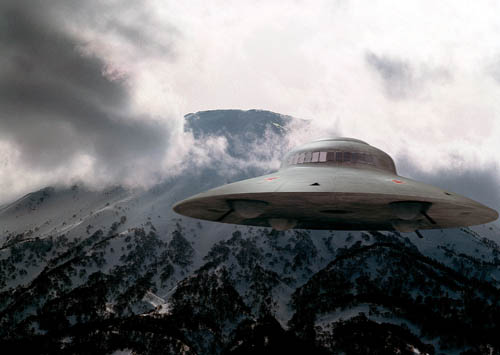
Dislodging established and much-repeated nonsense is much more difficult,
but that doesn’t mean we shouldn’t try. And in
cases where such nonsense tends to exaggerate or glorify the activities of
the Nazis during World War II, I think we should
try particularly hard. In that spirit of endeavour, let’s see what we can do
about the very untrue story of Viktor Schauberger
– builder of flying saucers. The detailed and ever-growing fiction of the
Nazi UFO mythos tells us that the Nazis were so
technically, creatively and scientifically brilliant that, had the war only
lasted a few months longer, they would have won it by
using their amazing flying saucers, which were so very nearly ready for
combat when the Allied forces entered
Czechoslovakia and Southern Germany.
There are two hurdles the mythos has always fought to overcome. Firstly,
that there is no historical record that the
characters said to have been involved in saucer development – figures like
Schriever, Belluzzo, Habermohl, Miethe and
Kleinever – had anything to with the development of ‘flying discs’. Only
Guiseppe Belluzzo has any verifiable scientific
background at all; Schriever was a delivery driver, and it is unclear
whether Habermohl and Miethe even so much as
existed as identifiable individuals.
Secondly, there is no historical evidence – physical or photographic – of
the supposed flying discs. We are repeatedly told
of craft of immense power, and sometimes immense size, defying all
scientific parameters known before or since. Yet not
so much as a bolt or a tachyon drive remains to verify their existence.
There are just the oft-reproduced, fuzzy post-war
photos taken by those who wished to convince us of saucer reality, but who
usually succeeded only in demonstrating the
unexplored potential of domestic containers and the art of close-up
photography.
The mythos argument is that rather than being extraterrestrial in origin,
the discs photographed between 1947 and 1955
were actually developed from captured Nazi blueprints, by captured Nazi
scientists. Relocated to America, they chose to
have their miracle craft chug unimpressively around the dusty back roads of
the USA, sometimes landing, sometimes
crashing, and sometimes – particularly the very small discs – utilising
conveniently-placed string to hang from trees,
swinging gently and photogenically in the wind. Not one claim of flying Nazi
discs pre-dates 1949 and the increased US
media interest in reports of flying saucers.
Enter Schauberger
Once upon a time, in Austria, there was a forester called Viktor Schauberger
(above). He lived from 1885 to 1958, and in
his long life he devised and worked on a variety of inventions. He had a
keen and original interest in the motion and motive
potential of water, and the most notable of his achievements were in the
design and development of log flotation methods
and flumes in the 1920s. Thereafter, he seems to have tried to develop his
ideas towards turbines and cheap natural
power and energy. There is little evidence that any of these later ideas
ever reached fruition, and although his son and
grandson have continued with some more theoretical aspects of his work, it
seems that no repeatable demonstration of
Schauberger’s supposed flight technology has ever taken place.
For those who want to further the cause of secret Nazi science, or to
maintain the flying saucer mystery, or both, Viktor
Schauberger has been a prayer answered. Not because he actually built flying
discs for the Nazis, but because some
round, bulbous inventions he probably worked on were photographed and, with
a bit of airbrushing to add Luftwaffe
insignia, they looked rather like the round, bulbous inventions that figured
in 1950s ufology. That he left no physical or
technical evidence of his supposed disc experiments, was at times somewhat
confused about the facts (there is evidence
that he spent some time in a psychiatric hospital), and kept a diary in a
shorthand that was difficult even for his family to
comprehend, could only help. He even had a long, impressive beard to suggest
that he was a misunderstood genius.
History was ripe for rewriting – and not just the once.
The ‘Nazi UFO’ mythos has itself had three distinct phases of life, with
long fallow periods between. The first was in the
early 1950s, when a few individuals, none of them connected with any post-war
rocket or aviation programme in Russia,
the USA or anywhere else, claimed to be at least partly responsible for the
saucer sightings of the period. Schauberger –
still alive at the time – didn’t get a mention at that stage, and made no
claim of his own.
Then, around 1975, Canadian Ernst Zundel, also known as Christof Friedrich
and notorious for his pro-active and well-publicised scepticism about the reality of the Holocaust, published (as
Mattern Friedrich) the book UFO – Nazi Secret
Weapon? Amid questions like “Is Hitler Still Alive?” and “Did the Nazis have
the Atom Bomb?” he set out a range of wild
speculations about lost Nazi technology and, for the first time to my
knowledge, introduced a number of the key elements
concerning Schauberger’s supposed involvement. Zundel writes: “Schauberger
did experiments early in 1940-41 in Vienna
and his 10 foot (3m) diameter models were so successful that on the very
first tests they took off vertically at such
surprising speeds that one model shot through the 24-foot (7.3m) high hangar
ceiling. After this ‘success’, Schauberger’s
experiments received ‘Vordringlichkeitsstufe’ – high priority – and he was
given funds and facilities as well as help. His
aides included Czech engineers who worked at the concentration camp at
Mauthausen on some parts of the Schauberger
flying saucers. It is largely through these people that the story leaked out.”
Zundel also provided an account of Schauberger’s later history and death.
Although Schauberger actually died at home in
1958, Zundel’s version has it that: “Viktor Schauberger lived for some years
in the United States after the war where he
was reported to be working on UFO projects. His articles were greatly
discussed and then one day in Chicago he just
vanished. His battered body was found and as to who killed Schauberger or
why has never been discovered. One version
has it that gangsters tried to beat his revolution-ising secrets out of him
and accidentally killed him.”
Zundel published the first drawings of what he referred to as the
‘electro-magnetically-powered Flying Hats’.In the next year, 1976, a biography of sorts appeared (Living Water, Gateway
Books, 1997), written by Olof
Alexandersson, a Swedish ‘electrical engineer and archive conservationist’.
While admitting that “the information for the
basis of this book is fragile”, he managed, from unlisted sources, to add
substantially to the mythos: “After a while
Schauberger received his call-up. It was now 1943, and even older men were
being drafted. He was eventually appointed
the commandant of a parachute company in Italy, but after a short stay,
orders came from Himmler that he should present
himself at the SS college at Vienna-Rosenhugel. When he arrived, he was
taken to the concentration camp at
Mauthausen, where he was to contact the SS standartenführer Zeireis, who
told him he had a personal greeting from
Himmler. ‘We have considered your scientific research and think there is
something in it. You can now either choose to
take charge of a scientific team of technicians and physicists from among
the prisoners, to develop machines utilising the
energy you have discovered, or you will be hanged.’
Schauberger understandably chose the first option (insisting that his
helpers must no longer be regarded as prisoners)
and so an intensive period of study began. After the SS college, where the
research was taking place, was bombed,
Schauberger and his team were transferred to Leonstein, near Linz. The
project they initiated there was a ‘flying saucer’
powered by a ‘trout turbine’.
The results of the research were surprising: it was both a success and a
failure. Schauberger later explained this briefly in
a letter to the West German defence minister Strauss on 28 February 1956:
“The first ‘flying saucer’ rose unexpectedly, at
the first attempt, to the ceiling, and then was wrecked.”
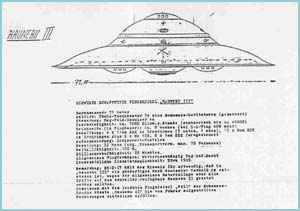

Alexandersson offered slightly different pictures of the ‘flying hats’,
probably just removing the Luftwaffe insignia Zundel
had added, and reproduced drawings of other absurd imaginary wartime UFOs
copied directly from Zundel.
Since then, architect Callum Coats has published a series of books
reflecting a persistent interest in Schauberger’s
theories about water and implosion. In 1996 (Living Energies, Gateway,
2001), he published what appear to be actual
photos of the ‘flying hats’, as well as reprinting earlier drawings, telling
us that: “Despite its compact size, this machine
generated such a powerful levitational force that when it was first switched
on (without Viktor Schauberger’s permission and
in his absence!), it sheared the six quarter-inch [6mm] diameter high-tensile
steel anchor bolts and shot upwards to smash
against the roof of the hangar.”
Coats also quotes one ‘A Khammas’, writing in the undated Issue 93 of
Implosion magazine: “There are many rumours
about what Schauberger was actually doing during this period, most of which
suggest he was in charge of developing
‘flying discs’ under contract to the army. It later became known that the
‘flying disc’ launched in Prague on the 19 February
1945, which rose to an altitude of 15,000 metres [50,000ft] in three minutes
and attained a forward speed of 2,200 kph
[1,370 mph], was a development of the prototype he built at Mauthausen
concentration camp. Schauberger wrote, ‘I only
first heard of this event after the war through one of the technicians who
had worked with me’. In a letter to a friend, dated
the 2 August 1956, Schauberger commented, ‘The machine was supposed to have
been destroyed just before the end of
the war on Keitel’s orders.’”
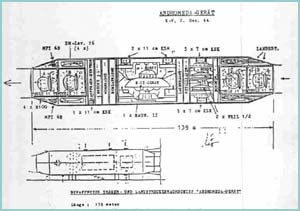
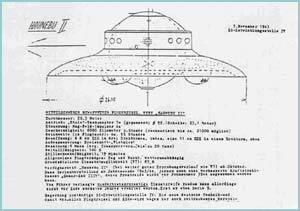
The tale is a fantasy taken from Rudolf Lusar’s German Secret Weapons of the
Second World War (1957). Perhaps it is
significant that while we are told that Schauberger twice effectively
rewrote the book on aviation technology, we are also
told that he was both absent from the demonstrations, and unaware that they
had taken place.
The most recent phase of belief in the Nazi UFO mythos began in the last six
years. Susan Michaels, in Sightings: UFOs
(Fireside, 1997), reproduces a range of palpable fictions from unreliable
sources, and introduces some freshly-minted
nonsense. Possibly becoming confused by inconsistent, fictional accounts of
a meeting with Hitler in 1933, she says: “Also
in 1939, German physicist Victor Schauberger developed a design for a flying
saucer using energy he claimed could be
harnessed from the tonal vibrations, or ‘harmonics’, of the cosmos. As far-fetched
as this theory seems, Schauberger’s
research attracted the attention of Adolf Hitler, who offered to provide
funds to build Schauberger’s own anti-gravity
saucer. But Schauberger, who was a deeply committed pacifist, turned Hitler
down.”
The following year, UK aviation writer and photographer Bill Rose wrote an
article (“UFO sightings – Why you can blame
Adolf Hitler”) in the popular science magazine Focus (October 1998). After,
apparently, four years of research, he
concluded that: “The father of the German disc programme was Rudolph
Schriever, a Luftwaffe aeronautical engineer
assigned to Heinkel in 1940... a full-sized piloted version, the V2, first
flew in 1943 with Schriever at the controls. Thirty feet [9m] in
diameter, the V2 had a fixed central cabin around which a ring with
adjustable vanes rotated to provide thrust in
both the horizontal and vertical planes... Early in 1944, Schriever’s top-secret
programme was moved to Czechoslovakia...
Schriever was joined by a number of leading aeronautical engineers...
Another addition was the Austrian scientist Viktor
Schauberger, who just before his death in 1958, claimed to have worked on a
highly classified US disc programme in
Texas.”
Rose seems to be the first to have suggested that Schauberger actually
worked together with the four other ‘engineers’
who, according to the mythos, built flying saucers, but even Rose’s
remarkable ‘sources’ pale in comparison to those
apparently available to Gary Hyland, author of Blue Fires (Headline, 2001),
who says of Schauberger: “The first test-flight
of the machine was reportedly amazingly successful (it apparently shot
through the roof of the laboratory and had to be
recovered some distance away)... [Schauberger] developed his ideas further,
to the point where a full-sized, though
unmanned flying disc prototype that used his new engine apparently flew
under radio control... At the end of the war, the
American forces got to Leonstein ahead of the Russians and found Schauberger
and his team of experts. After letting the
members of his team leave after a thorough interrogation, the Americans held
Schauberger in protective custody for six
months; it would seem that they knew exactly what he had been up to and
wanted to prevent other nations, as well as
renegade Nazis, from continuing to use his services”.
The Cook Report
Exceeding even the rich imaginations of Michaels, Rose and Hyland is the
much-publicised book The Hunt for Zero Point
(Century, 2001) by Nick Cook, a notable freelance aviation journalist who
has written for the very respectable Jane’s
Defence Weekly. In the course of an investigation lasting, we are told, some
10 years, he appears to have been
comprehensively misinformed by a whole series of individuals; or perhaps by
individuals acting on behalf of a group with a
specific agenda. It seems that for all the informants he gathered along the
way, none of them ever warned Cook that
people with an investment in making the Nazi regime (and the SS in
particular) look good are quite happy to use deception
to do so.
Without going through Cook’s oddly directionless book in any detail, it’s
worth noting that his primary source about
Schauberger was a Polish gentleman named Igor Witkowski. Witkowski,
apparently, volunteered to drive Cook around,
showing him sites where Schauberger had worked for the Nazis, constructing
and testing ‘The Bell’, an experimental device
with two cylinders spinning in opposite directions. Cook was told that this
glowed blue and destroyed plants, birds, animals,
and sometimes humans. Internet searches for Witkowski bring him up in
conjunction with the loopy, ‘1930s-crashed-saucer-back-engineered-by-the-SS’ end of Polish ufology, and he has self-published
six or more separate items with titles like
Hitler’s Supersecret Weapon.
Witkowski told Cook that his extraordinary information came from an
unnamable source, which Cook seems to have
accepted without question. It seems that a “Polish government official”
phoned Witkowski, inviting him to view documents
and take notes about the development and concealment of extraordinary Nazi
technology as given in a record of “the
activities of a special unit of the Soviet secret intelligence service.”
Witkowski’s evidence, together with a visit to
Schauberger’s grandson, leads Cook to reproduce the material about
imprisonment by the US after the war, and the
apartment being blown up by the Russians, together with various unlikely
claims about Schauberger being offered massive
sums of money by (right-wing) Americans in the years before he died. Cook
also informs us that Schauberger’s designs
had been stolen by Heinkel in the early part of the war; that he had worked
on secret projects for the Nazis from 1941-45,
sometimes using slave labour; that he had created, specifically for the SS,
disc-shaped machines with engines so
revolutionary that even Cook, an aviation journalist, fails to explain how
they worked.
One of the problems faced by the Nazi ufologists is to explain the complete
absence of palpable evidence. Cook chooses
to adopt SS General Hans Kammler for this purpose. Kammler used
concentration camp labour to build the Atlantic Wall,
contributed to the construction of the Auschwitz gas chambers, and was in
charge of the V2 missile programme, which
again ruthlessly exploited slave labour. He is also, it seems, the person
who spirited away all traces of Schauberger’s
astonishing technical achievements, allegedly to his own advantage by way of
trade with the approaching Allies. However,
the earliest version I have found of this story dates from 1989, put about
by Nevada Aerial Research, who have done much
to publicise the supposed wonders of Nazi technology (and they later came up
with the most unpleasant of the tales of
dominant and brutal alien beings living below the US air base at Dulce). I
do not believe that their account of Kammler had
any existence prior to 1989, or that it is true.
There is no period of history more thoroughly examined than 1939-1945, and
no subject more closely examined than the
Nazis, and more particularly, the SS. Had there been any reality in the
claims for the construction and testing (or more) of
high-speed flying disc technology by the Third Reich during that period,
then we would have every reason to expect that it
would have been discovered, reported, and analysed by writers and
researchers far more competent than those referred o above. Yet it never has been.
Nonetheless, there is a recurrent and developing counter-cultural argument
that insists these extraordinary events actually
took place. It is a theory that has sold millions of books and videos, and
it continues to fuel a belief that, given just a few
more months, the true genius of the Nazis, the fanaticism of the SS, and the
inspiration of the Führer would have won
through, and the Allies – no, not just the Soviet Union, but all the Allies
– would have been defeated.
While I’m happy to be challenged by solid evidence, I’ve found no reason to
believe that Viktor Schauberger knew anything
of this. I think he died before it was made up. He never built a flying disc,
let alone one that flew using some unknown and
unprecedented method of propulsion. He wasn’t sought out by Hitler or the SS,
didn’t choose slave workers from
Mauthausen to assist him, and wasn’t held by the Americans after the war
because of his technical knowledge and
achievements. If the Russians burned his flat down, I doubt that they even
knew whose flat it was. The only truth seems to
be that he visited the USA in the 1950s, leaving behind him components of
two experimental water turbines; the objects
that Zundel (who adorned them with Nazi insignia) said flew.
...have been told, all too often, not to use the term ‘Nazi UFOs’, because this
is really about secret and suppressed
technology. It just happens that the Germans were clever enough to invent
it, and even if Ernst Zundel manufactured or
exaggerated some of the facts, then he only did it for the money.
On ‘The Zundelsite’, in the ‘Zundelsite Zgram’ for 26 December 1998, the
matter is explained in his own words. He says of
his publications and his radio appearances: “I realised I had discovered a
potent publicity tool with this topic – which would
get me lots of free time on radio and TV shows, to expose other, more
‘politically incorrect’ topics to vast audiences... I
slipped in lots and lots of ‘Revisions of History’... I talked about the
disinfecting procedures to protect the valuable worker
inmates in the Dora-Mittelwerke rocket underground assembly factories... I
mentioned the medical facilities in the camps,
the calorie count of the meals served, etc... The UFO books themselves also
had very important politically otherwise
impossible-to-tell messages embedded within them, such as the National-Socialist
Party program and Hitler’s analysis of
the Jewish question... All that – and I made a fine bundle of money! The
money I made from the UFO books I invested in
publishing the booklets Die Auschwitz-Luge - a translation of The Auschwitz
Lie, Dr Austin App’s booklet The Six Million
Swindle and A Straight Look at the Third Reich; and, of course, later, Did
Six Million Really Die? by Richard Harwood.”
If Zundel’s own account is to be believed – and I think it probably is –
then his fictions about Nazi UFOs have funded the
distribution of Holocaust revisionist material around a substantial part of
the world. So, at the end of the day, there’s more
at stake here than just tall tales and technological fantasies; there would
appear to be
a good ethical
argument to stop
repeating such fictions and to put the ‘Nazi UFO’ mythos to rest once and
for all.
Hiçbir yazý/ resim izinsiz olarak kullanýlamaz!! Telif haklarý uyarýnca bu bir suçtur..! Tüm haklarý Çetin BAL' a aittir. Kaynak gösterilmek þartýyla siteden alýntý yapýlabilir.
The Time Machine Project © 2005 Cetin BAL - GSM:+90 05366063183 -Turkiye/Denizli
Ana Sayfa /
index /Roket bilimi /![]() E-Mail /CetinBAL/Quantum Teleportation-2
E-Mail /CetinBAL/Quantum Teleportation-2
Time Travel Technology /Ziyaretçi Defteri /UFO Technology/Duyuru